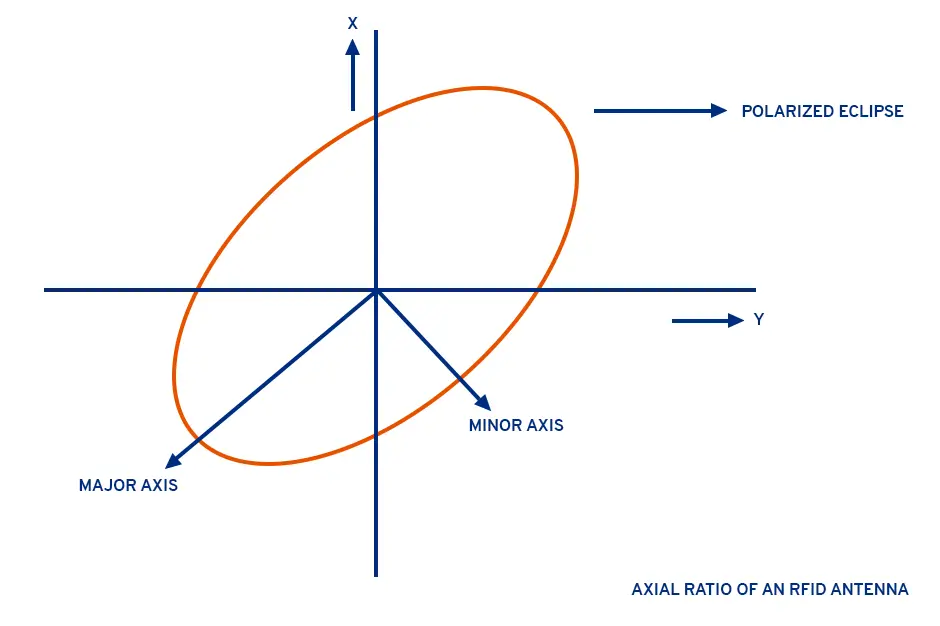Axial Ratio
What is the Axial Ratio of an RFID Antenna?
The axial ratio is a common measurement used when working with RFID antennas. The axial ratio (AR) is the ratio between the major and minor axis of a circularly polarized antenna pattern. The axial ratio of an antenna is defined as the minor axis to major axis ratio of an electromagnetic wave. It is a measure of the deviation from an ideal circular polarized antenna pattern over a given angular range.

Axial Ratio of an RFID Antenna
It is important to understand what the axial ratio of an antenna is because it is the main factor that determines the performance of the reader and how many tags can be read at any given time. A low axial ratio means that you can get more tags in the reading zone with a given power output from your reader.
Circular polarization (helix, crossed dipoles and patch) – this is the most common type of antenna in the world today for reading RFID tags. It is a good choice when you need to read tags in random orientation because it has a very low axial ratio, but you lose 3dB when you use this type of antenna.
Crossed dipoles – the electromagnetic wave travels along two planes, creating a crossed polarization (like a corkscrew). This is also the best choice when you want to read tags in random orientation because it has the lowest axial ratio of all the other types of antenna.
The crossed dipoles of this antenna have a matching network that uses two large L-shaped strips joining the arms of the dipoles to match their impedances. This creates a very simple tuning network and enables the antenna to operate in high-inductance environments without damaging its axial ratio.
The flexibility of RFID antennas is important to consider when you need to read tags in random orientation and are limited by the amount of current available from your reader or you just don’t like the size or weight of the previous type of antenna.
Antennas that have a low axial ratio allow you to read more tags in the reading zone with a single power output from your reader because they give you more gain than an antenna with a higher axial ratio!
Another advantage of a low axial ratio antenna is that it can be used with other antennas and frequencies as long as they are within the same frequency band. This is because a low axial ratio antenna has a lower output impedance than a linear antenna that has the same input impedance.
When it comes to selecting an antenna for a specific application there are many factors that you will need to consider. The axial ratio, size and gain of the antenna are all important factors to consider.
Generally speaking a small antenna will have a low axial ratio as it has lower gain. This is because it has a lower input impedance than a larger antenna and so has less resistance to the energy in the radio wave that is generated by your reader.
In addition to axial ratio the other important factor to consider is the antenna frequency. You need to make sure that the antenna is able to cover all of the frequencies you need it to in order for it to be effective. This is because the antenna can be influenced by other waves that are emitted around it such as a cell phone, WiFi or motors that can cause signal strength degradation.




